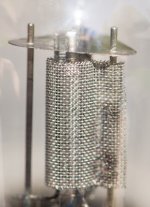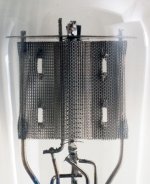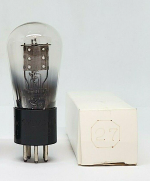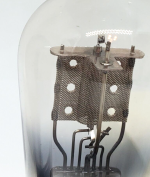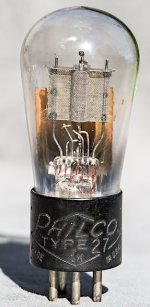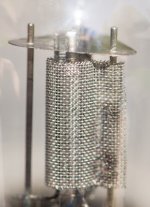Your work is fascinating. I'm glad they have let you out of the mental hospital to continue with it!For those not afraid of abstract stuff, try adding weight to your amplifier and listen what happens.
I don't know if you remember the famous "Dunker Factor"? Attributed to Thomas Dunker who was a master of boat anchors. It was the ratio of output in watts to weight in kilograms. A good Dunker Factor would be 1 watt to 100kg.
https://vinylsavor.blogspot.com/2015/11/live-from-denmark-etf-2015-part-6.html
So you never heard a good single-ended low-feedback amplifer (and since the whole discussion is centered around old-design DHT tubes, I believe you implied those, too). Why do you use this isolated observation based on a limited number of SE amps to support your generalized argument that new-design parts are better than old ones?You're either making generalizations ... I've also heard great tube product, but never heard a good single ended, low feedback amplifier - ever.
All I can say is that my new-design estat headphone amplifier using old-design DHT tubes sounds gorgeous. This amplifier measures ok in terms of frequency response, noise and harmonic distortion -- but nothing out of this world. Many (if not most) cheap solid-state amps may (will) have better measured performance, but ears and brains have different metrics that are not entirely covered by these measurements. That's not exacly big news in 2025, though.
Somehow I missed the "Dunker Factor" term, thank you Andy, for bringing it up.
Yes, I find mass of the device, including the speaker, to be highly audible and significant to the audio performance. My explanation is the inertia and dampening effect of the mass.
During some of my free time, I tried mimicking the effect of mass by adding liquids like water and oil to strategic points, resonant points to an audio device.
Passive components in my opinion that do inherently dampen for example, are oil capacitors. Soft waxes, especially sticky ones also work.
I also find that the more lightweight an audio component is, for example a commercial solid state amplifier built out of thin steel sheets (highly) resonant, the more sensitive they are to added mass and dampening components. I also believe this is the main reason behind the audibility of cables, where the cable can be seen as added mass with a specific frequency range of dampening (or resonance), depending of the cable structure, like amount and hardness of the dielectric and conductor construction (single core vs stranded). From my experience, light-weight highly resonant devices are more sensitive to cables, especially if the cable mass is significant vs the device mass.
Yes, I find mass of the device, including the speaker, to be highly audible and significant to the audio performance. My explanation is the inertia and dampening effect of the mass.
During some of my free time, I tried mimicking the effect of mass by adding liquids like water and oil to strategic points, resonant points to an audio device.
Passive components in my opinion that do inherently dampen for example, are oil capacitors. Soft waxes, especially sticky ones also work.
I also find that the more lightweight an audio component is, for example a commercial solid state amplifier built out of thin steel sheets (highly) resonant, the more sensitive they are to added mass and dampening components. I also believe this is the main reason behind the audibility of cables, where the cable can be seen as added mass with a specific frequency range of dampening (or resonance), depending of the cable structure, like amount and hardness of the dielectric and conductor construction (single core vs stranded). From my experience, light-weight highly resonant devices are more sensitive to cables, especially if the cable mass is significant vs the device mass.
I have for sale a limited quantity of excellent very old stone weights intended for installation on tube amplifiers, I have models of 5 Kg, 20 Kg and 100Kg, the price is $1 per Kg.
You'll want to expand you business to solid state, increase the price by orders of magnitudes, and get in touch with Pass Labs 😉I have for sale a limited quantity of excellent very old stone weights intended for installation on tube amplifiers, I have models of 5 Kg, 20 Kg and 100Kg, the price is $1 per Kg.
What is the shipping within EU?I have for sale a limited quantity of excellent very old stone weights intended for installation on tube amplifiers, I have models of 5 Kg, 20 Kg and 100Kg, the price is $1 per Kg.
But kidding aside... at my pre-burnout phase in 2004-ish, I was playing with all natural materials only in amps (for as far as possible): wood chassis, transformers potted in wood with bees wax, cotton braiding covering pure silver wire, silver/wood connectors, jupiter beeswax caps. Definitely in the end-range of diminishing returns, and I ended up listening to components instead of the music. No more emotion, purely technical. Haven't touched audio since now (a brief stint in 2018 that was mostly information gathering and playing with a tube tester).
In the end I just want to rage to Tool or sink away in a sofa listening to Ella's soothing voice. Who cares if it is bit-perfect or undistorted.
In the end I just want to rage to Tool or sink away in a sofa listening to Ella's soothing voice. Who cares if it is bit-perfect or undistorted.
Of course is for free !!!What is the shipping within EU?
Mass counts but not mass alone. Tubes, transformers, inductors, and capacitors vibrate in response to music signals and also act as microphones. These effects are small in magnitude and don't matter in the big picture of things, but when it comes to micro detail retrieval, that's a different story. These components should be acoustically decoupled from the chassis.
One cannot entirely decouple, you still have wires that to some extent, conduct vibrations.
Output transformers for example can "sing". Try running a frequency sweep at full power on a loaded OPT. Some, especially if not impregnated, can output a howl.
I doubt transformers, inductors and capacitors can bring significant microphony, but of course, that can be tested by biasing the DUT, tapping it and measuring signal modulation on a determined impedance.
However, some tubes can be quite microphonic. Easy to verify.
Output transformers for example can "sing". Try running a frequency sweep at full power on a loaded OPT. Some, especially if not impregnated, can output a howl.
I doubt transformers, inductors and capacitors can bring significant microphony, but of course, that can be tested by biasing the DUT, tapping it and measuring signal modulation on a determined impedance.
However, some tubes can be quite microphonic. Easy to verify.
So now we have our ultimate Nirvana - a 100kg amplifier with nothing but mesh plate tubes! Sigh..... (starts to dream...)
Andy, you could start experimenting auditioning mesh geometry containing components to your builds. There's a chance you won't need mesh plate tubes anymore.
NFB is a good thing under proper conditions, for example in an op-amp whose operating (audio) frequency range is minuscule compared to bandwidth (hundreds of MHz). Under such conditions the NFB loop behaves as theory predicts in reducing distortion. But if operating range and bandwidth are close, a e.g. in a tube amplifier, NFB introduces its own distortion.
Another problem of global NFB is speaker back EMF feeding into amplifier input through the NFB loop and wreaking havoc to the input signal, especially low level detail. A solid state amplifier with 40-60 dB of global NFB may measure very low THD, but because of interaction with speaker it doesn't sound good. In a no-feedback amplifier such as SET, speaker back EMF does not feed into amplifier's input, which allows preservation of micro detail.
Another problem of global NFB is speaker back EMF feeding into amplifier input through the NFB loop and wreaking havoc to the input signal, especially low level detail. A solid state amplifier with 40-60 dB of global NFB may measure very low THD, but because of interaction with speaker it doesn't sound good. In a no-feedback amplifier such as SET, speaker back EMF does not feed into amplifier's input, which allows preservation of micro detail.
Last edited:
I've always been about fact and truth. I listen, measure and observe people. I am positive some people really don't like what I say - or me for that matter. The truth when it doesn't agree with your view is a challenge. People don't like challenges. I never lie.
You're either making generalizations ... I've also heard great tube product, but never heard a good single ended, low feedback amplifier - ever.
I did tests with all these components. Some capacitors are quiet (silver mica and paper on oil), but others are pretty loud and act as very bad quality microphones. Same with transformers; impregnated permalloy and amorphous core transformers are very quiet, but steel core ones "sing" and act as very bad microphones.I doubt transformers, inductors and capacitors can bring significant microphony
I'm guessing many of you are die-hard DHT single ended or nothing. That's fine.
You don't strip out anything with a good amplifier of any construction. That comment on P-P amps shows true ignorance. Supported by other comments made in a similar vein.
Okay. This thread was on mesh plate tubes and why they sound the way they do (if any reason). It has nothing to do with single-ended vs push-pull. It has nothing to do with subjective vs objective opinions being exclusive to each other. In fact, I accommodate both views butt hey have their places.
If we can't stay on topic, the thread will have run it's course.
You don't strip out anything with a good amplifier of any construction. That comment on P-P amps shows true ignorance. Supported by other comments made in a similar vein.
Okay. This thread was on mesh plate tubes and why they sound the way they do (if any reason). It has nothing to do with single-ended vs push-pull. It has nothing to do with subjective vs objective opinions being exclusive to each other. In fact, I accommodate both views butt hey have their places.
If we can't stay on topic, the thread will have run it's course.
Folks you have an ignore button that brings peace and quiet to this wonderful forum when needed....
This has been an interesting thread in many ways. Plesse leave it open.If we can't stay on topic, the thread will have run it's course.
Since you have been a major contributor to the thread, it seems to me that you're not really the person to moderate it.
Please leave it open and we'll all try and stay as meshie and friendly as we can....
Here are photos of 2 types of mesh plate 27 tubes. The Philco type has square mesh. the RCA/Cunningham type has round mesh. A number of users including myself prefer the square mesh.
Any idea why?
Any idea why?
Attachments
- Home
- Amplifiers
- Tubes / Valves
- Mesh plate tubes
